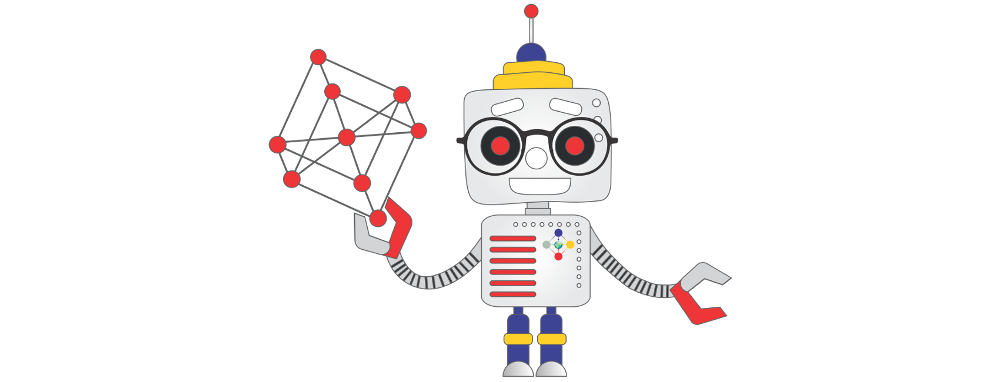This is the repository for the work "Quantitative trends in 8 physical properties of 115000 inorganic compounds gained by machine learning" by Blokhin and Villars (2018).
mpds.io/ml and mpds.io/materials-design
This is the proof of concept, how a relatively unsophisticated statistical model (namely, random forest regressor) trained on the large MPDS dataset predicts a set of physical properties from the only crystalline structure. Similarly to ab initio, this method could be called ab datum. (Note however that the simulation of physical properties with a comparable precision normally takes days, weeks or even months, whereas the present method takes less than a second!) A crystal structure in either CIF or POSCAR format is required. The following physical properties are predicted:
- isothermal bulk modulus
- enthalpy of formation
- heat capacity at constant pressure
- melting temperature
- Debye temperature
- Seebeck coefficient
- linear thermal expansion coefficient
- electrical conductivity
- thermal conductivity
- band gap (or its absence, i.e. whether a crystal is conductor or insulator)
Further, a reverse task of predicting the possible crystalline structure from a set of given properties is solved. The suitable chemical elements are found, and the resulted structure is generated based on the MPDS prototype (if found).
apt-get install swig python3-devgit clone REPO_ADDR
virtualenv --system-site-packages REPO_FOLDER
cd REPO_FOLDER
. bin/activate
pip install -r requirements.txtThe model is trained on the MPDS data using the MPDS API and the scripts train_regressor.py and train_classifier.py. Some subset of the full MPDS data is opened and possible to obtain using API for free (just login at the MPDS via GitHub). If the training is performed on the limited (e.g. opened) data subset, the scripts must be modified to query MPDS accordingly. The MPDS API returns an HTTP error code 402 if a user's request is authenticated, but not authorized. See a full list of HTTP status codes.
The code tries to use the settings exemplified in a template:
cp data/settings.ini.sample mpds_ml_labs.iniThe code can be used either as a standalone command-line application or as a client-server application.
Examples of the standalone command-line architecture are the scripts mpds_ml_labs/test_props_cmd.py and mpds_ml_labs/test_design_cmd.py.
In the case of the client-server architecture, the client and the server communicate over HTTP using a simple API, and any client able to execute HTTP requests is supported, be it a curl command-line client, a Python script or the rich web-browser user interface. Examples of the Python scripts are mpds_ml_labs/test_props_client.py and mpds_ml_labs/test_design_client.py.
Server part is a Flask app mpds_ml_labs/app.py. The simple HTML5 client apps props.html and design.html, supplied in the webassets folder, are served by a Flask app under http://localhost:5000. By default, to serve the requests the development Flask server is used. Therefore an AS-IS deployment in an online environment without the suitable WSGI container is highly discouraged. For the production environments under the high load it is recommended to use something like TensorFlow Serving.
The term descriptor stands for the compact information-rich representation, allowing the convenient mathematical treatment of the encoded complex data (i.e. crystalline structure). Any crystalline structure is populated to a certain relatively big fixed volume of minimum one cubic nanometer. Then the descriptor is constructed using the periodic numbers of atoms and the lengths of their radius-vectors. The details are in the file mpds_ml_labs/prediction.py.
As a machine-learning model an ensemble of decision trees (random forest regressor) is used, as implemented in scikit-learn Python machine-learning toolkit. The whole MPDS dataset can be used for training. To estimate the prediction quality of the regressor model, the mean absolute error and R2 coefficient of determination is checked. To estimate the prediction quality of the binary classifier model, the fraction incorrect (i.e. the error percentage) is checked. The evaluation process is repeated at least 30 times to achieve a statistical reliability.
Generating the crystal structure from the physical properties is done as follows. The decision-tree properties predictions of nearly 115k distinct MPDS phases are used for the radius-based neighbor learning. This allows to extrapolate the possible chemical elements for almost any given combination of physical properties. The results of the neighbor learning are approximately 10M rows, stored in a Postgres table ml_knn:
CREATE TABLE ml_knn (
id INT PRIMARY KEY,
z SMALLINT NOT NULL,
y SMALLINT NOT NULL,
x SMALLINT NOT NULL,
k SMALLINT NOT NULL,
w SMALLINT NOT NULL,
m SMALLINT NOT NULL,
d SMALLINT NOT NULL,
t SMALLINT NOT NULL,
i SMALLINT NOT NULL,
o SMALLINT NOT NULL,
els VARCHAR(19)
);
CREATE SEQUENCE ml_knn_id_seq START WITH 1 INCREMENT BY 1 NO MINVALUE NO MAXVALUE CACHE 1;
ALTER SEQUENCE ml_knn_id_seq OWNED BY ml_knn.id;
ALTER TABLE ONLY ml_knn ALTER COLUMN id SET DEFAULT nextval('ml_knn_id_seq'::regclass);
CREATE INDEX prop_z ON ml_knn USING btree(z);
CREATE INDEX prop_y ON ml_knn USING btree(y);
CREATE INDEX prop_x ON ml_knn USING btree(x);
CREATE INDEX prop_k ON ml_knn USING btree(k);
CREATE INDEX prop_w ON ml_knn USING btree(w);
CREATE INDEX prop_m ON ml_knn USING btree(m);
CREATE INDEX prop_d ON ml_knn USING btree(d);
CREATE INDEX prop_t ON ml_knn USING btree(t);
CREATE INDEX prop_i ON ml_knn USING btree(i);
CREATE INDEX prop_o ON ml_knn USING btree(o);The full contents of this table can be provided by request. The found elements matching the given property ranges are used to compile a crystal structure based on the available MPDS structure prototypes (via the MPDS API). See mpds_ml_labs/test_design_cmd.py.
These are examples of using the curl command-line client.
For the local server:
curl -XPOST http://localhost:5000/predict -d "structure=data_in_CIF_or_POSCAR"
curl -XPOST http://localhost:5000/design -d "numerics=ranges_of_values_of_8_properties_in_JSON"
curl -XPOST http://localhost:5000/design -d 'numerics={"z":[5,119],"y":[-325,0],"x":[22,28],"k":[-18,114],"w":[0.5,3.5],"m":[958,1816],"d":[464,777],"t":[33,50],"i":[4,16],"o":[3,42]}'For the demonstration MPDS server:
curl -XPOST https://labs.mpds.io/predict -d "structure=data_in_CIF_or_POSCAR"
curl -XPOST https://labs.mpds.io/design -d "numerics=ranges_of_values_of_8_properties_in_JSON"
curl -XPOST https://labs.mpds.io/design -d 'numerics={"z":[5,119],"y":[-325,0],"x":[22,28],"k":[-18,114],"w":[0.5,3.5],"m":[958,1816],"d":[464,777],"t":[33,50],"i":[4,16],"o":[3,42]}'This project is built on top of the open-source scientific software, such as:
- The client and the server code: LGPL-2.1+
- The machine-learning MPDS data generated as presented here: CC BY 4.0
- The open part of the experimental MPDS data (10%): CC BY 4.0
- The closed part of the experimental MPDS data (90%): commercial
- Blokhin E, Villars P, Quantitative trends in physical properties of inorganic compounds via machine learning, arXiv, 2018


